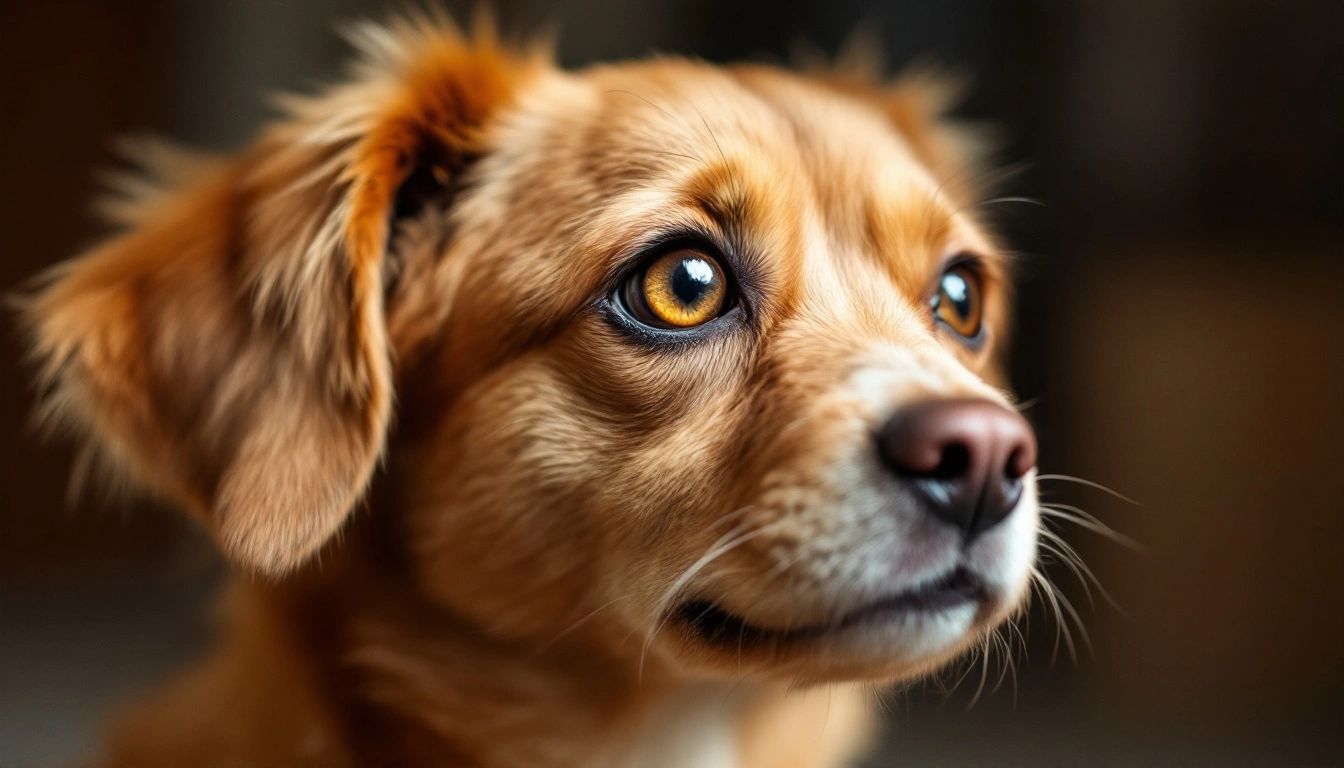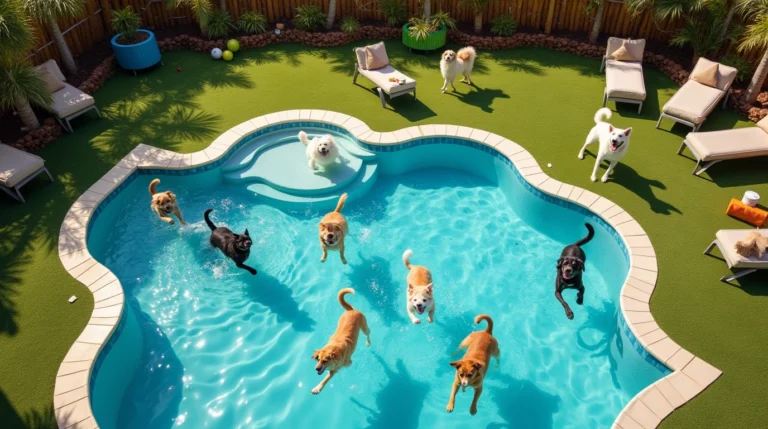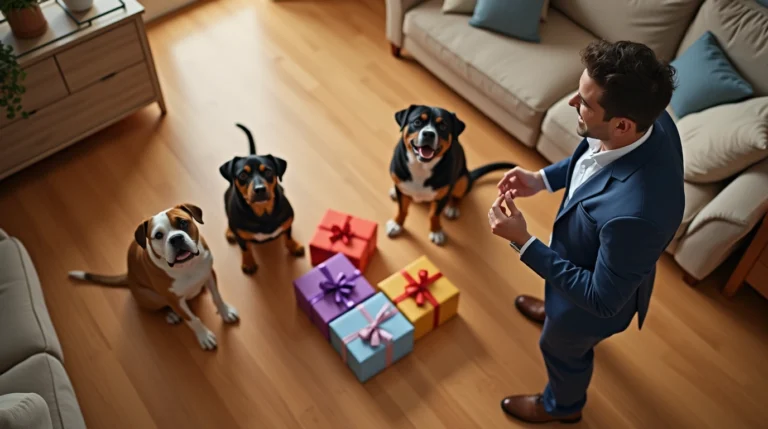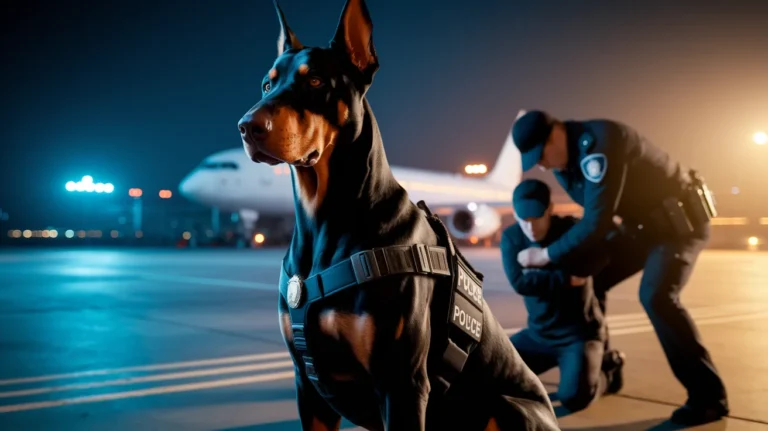Discover the 5 hilarious reasons behind dog side eye behavior, from judgment to jealousy. Learn what your pup’s sideways glance really means with our expert guide
Have you ever caught your furry friend giving you that unmistakable dog side eye? That sideways glance where they seem to be judging your every move without turning their head? It’s one of the most expressive and often hilarious behaviors our canine companions display. The classic dog side eye—sometimes called “whale eye” by professional trainers—occurs when your dog looks at something without turning their head, revealing the whites of their eyes in a sideways glance. This article explores five entertaining reasons why our four-legged friends throw shade with their eyes, what it means for your relationship, and when you might need to pay closer attention to this behavior. Whether you’re a seasoned dog owner or just a fan of canine antics, understanding the science and psychology behind the infamous dog side eye will give you valuable insights into your pet’s communication style.
Table of Contents
What Exactly Is the Dog Side Eye?
Before diving into the reasons behind this expressive look, let’s understand exactly what constitutes the infamous dog side eye.
Defining the Canine Side-Eye Glance
The dog side eye occurs when your pup looks at something out of the corner of their eye without turning their head. This sideways glance often reveals the whites of their eyes (technically called the “sclera”) more prominently than normal. Animal behaviorists sometimes refer to this expression as “whale eye” due to the distinctive appearance it creates.
When a dog gives the side eye, they’re essentially using peripheral vision to observe something while keeping their head relatively still. This creates that unmistakable look that we humans often interpret as judgment, skepticism, or even guilt.
According to a 2022 study published in the Journal of Veterinary Behavior, dogs have developed particularly expressive eyes through co-evolution with humans. The researchers found that dogs have evolved specialized facial muscles that wolves don’t possess, allowing them more nuanced eye expressions—including the perfect side eye.
The Difference Between Side Eye and Normal Dog Gazes
Not all sideways glances are true dog side eyes. Here’s how to distinguish the authentic side eye from normal canine gazing:
| Characteristic | Normal Dog Gaze | Classic Dog Side Eye |
| Head Position | Typically turns toward object of interest | Remains fixed facing forward |
| Visible Eye Whites | Minimal white showing | Significant white portion visible |
| Muscle Tension | Relaxed facial muscles | Often accompanied by facial tension |
| Body Language | Aligned with head direction | Body and head may face different directions |
| Duration | Brief, scanning glances | Often held longer for effect |
5 Funny Reasons Dogs Give the Side Eye
Now that we understand what constitutes a genuine dog side eye, let’s explore the five most entertaining reasons behind this expressive behavior.
1. The “I Can’t Believe You Did That” Judgment Glance
Perhaps the most classic of all dog side eyes is the judgment glance. This occurs when your dog is clearly unimpressed with your behavior or decisions. Common triggers include:
- Eating delicious food without sharing
- Coming home smelling like another dog
- Putting them in an embarrassing outfit
- Stopping a particularly enjoyable play session
- Waking them up from a cozy nap
Dog behaviorist Dr. Alexandra Horowitz, author of “Inside of a Dog: What Dogs See, Smell, and Know,” suggests that while dogs aren’t actually judging us in the human sense, they are exceptionally attuned to changes in our routine that might affect them. The side eye in these situations often indicates their heightened attention to your unexpected behavior.
The judgment side eye is typically accompanied by other body language cues like a slight head tilt, perked ears, or a complete freeze in movement—as if your dog is taking a moment to process your audacity.
Bella, a 5-year-old Golden Retriever from Portland, Oregon, has become an internet sensation for her perfectly timed judgment side eyes. Her owner reports: “Anytime I eat ice cream without offering her a taste, I get the look. It’s so dramatic that I’ve started an Instagram account just featuring her side-eye reactions.”
2. The “I’m Being Sneaky” Side Glance
Another common reason for dog side eye is when they’re trying to be sneaky about something they know may not be allowed. This mischievous side eye often appears:
- When they’re contemplating stealing food from the counter
- During the moments before a forbidden furniture jump
- When they’re hiding something they shouldn’t have
- Right before engaging in a prohibited activity
- When they’re planning a sneak attack on their favorite toy
This version of the side eye is particularly funny because it’s often accompanied by an almost cartoonish attempt at nonchalance. Your dog might freeze in place, give you the side eye to check if you’re watching, then proceed with their mischievous plan if they think the coast is clear.
According to a survey conducted by the American Kennel Club involving over 1,000 dog owners, 78% reported witnessing their dogs giving the “sneaky side eye” immediately before engaging in behavior they knew was against house rules.
Charlie, a notorious Beagle mix, has mastered the sneaky side eye according to his owner: “He’ll stand completely still next to the garbage can, slowly turn just his eyeballs to check if I’m watching, then make his move when he thinks I’m not looking. The side eye is his tell every time.”
3. The I’m Confused by Your Weirdness Expression
Dogs often throw serious side eye when they’re genuinely confused by human behavior. This version appears when:
- You’re dancing or exercising in the living room
- You’re singing loudly in the shower or car
- You’re having an animated video call conversation
- You’re trying out a new weird laugh or voice
- You’re practicing yoga poses on the floor
The confusion side eye is marked by a particularly intense stare, often with slightly raised eyebrows and a completely still posture. Your dog is essentially trying to make sense of your unusual behavior by observing it carefully without getting too close to whatever strange thing is happening.
Dr. Stanley Coren, canine psychologist and author of “How Dogs Think,” explains that dogs are constantly trying to predict human behavior as part of their social adaptation. When we do something unexpected, the side eye allows them to observe while maintaining a safe distance.
Max, a Shih Tzu from Miami, gained viral fame when his owner captured his bewildered side eye during her first attempt at TikTok dancing. “He stared at me from the corner of the couch for the entire routine, never moving his head—just his eyes following me with what looked like complete disappointment,” his owner shared.
4. The “I’m Jealous” Side-Eye Surveillance
Jealousy is a powerful emotion in our canine companions, and it often triggers the side eye. This surveillance-style side eye appears when:
- You’re petting another dog or animal
- You’re giving attention to another family member
- A visitor is receiving more of your focus than usual
- A new pet has joined the household
- You’re focusing intensely on an object instead of them
The jealousy side eye is particularly distinctive because it’s usually directed at the object of your attention rather than at you. Your dog will keep their head pointed toward you while their eyes slide sideways to monitor the “competition.”
A 2014 study published in PLOS ONE was the first to provide evidence of jealous behaviors in dogs. Researchers found that dogs displayed significantly more attention-seeking and disruptive behaviors when their owners interacted with a realistic stuffed dog compared to when they interacted with non-social objects.
Luna, a protective Border Collie, has perfected the jealousy side eye according to her family: “When my husband and I hug, she inserts herself between us while giving him the most dramatic side eye. She doesn’t bark or whine—just silently judges him with those sideways glances until he includes her in the hug.”
5. The “I’m Waiting for Permission” Hopeful Side Glance
Perhaps the most endearing version of the dog side eye is the hopeful glance that appears when they’re waiting for permission to do something they really want to do. This anticipatory side eye happens when:
- Their favorite treat is visible but not offered
- The car door is open but they haven’t been invited in
- You’re eating something they hope to sample
- Their leash is in your hand but you haven’t called them
- They want to join you on the furniture
This version of the side eye is usually accompanied by other submissive or anticipatory body language, like slightly lifted paws, a gently wagging tail, or small whimpers. It’s your dog’s subtle way of saying, “I’m being good and patient, but I really, really hope you’ll let me do/have this thing.”
A 2019 study in Animal Cognition found that dogs have evolved facial movements specifically to communicate with humans, with eye movements being particularly effective at eliciting empathetic responses from their owners.
Cooper, a patient Labrador, has mastered this look according to his owner: “When I’m making his dinner, he sits perfectly still by his bowl, facing forward like a statue. The only thing that moves are his eyes, sliding sideways to watch every move I make with his food. It’s both hilarious and impossible to resist.”
When Dog Side Eye Might Signal Something More Serious
While we’ve focused on the humorous aspects of dog side eye, it’s important to recognize when this behavior might indicate stress, anxiety, or health issues.
Signs of Stress or Anxiety
The dog side eye, particularly when showing a lot of white (whale eye), can be a warning sign of stress or anxiety. When accompanied by these additional behaviors, it might be time to address the underlying cause:
- Stiff body posture
- Lowered tail position
- Flattened ears
- Lip licking or yawning
- Avoidance behaviors
According to the American Veterinary Medical Association, consistent stress signals should be taken seriously and may require professional intervention. If your dog frequently displays these combinations of behaviors, consulting with a veterinarian or certified animal behaviorist is recommended.
Potential Health Considerations
In some cases, what appears to be a side eye might actually indicate eye discomfort or vision problems. Pay attention if you notice:
- Frequent side eye glances in bright light
- Squinting or excessive blinking
- Cloudiness in the eye
- Redness or discharge
- Pawing at the face or eyes
Veterinary ophthalmologist Dr. Terri McCalla notes that unilateral eye pain can cause dogs to hold their head in ways that appear similar to giving the side eye. “If you notice your dog consistently tilting their head and looking sideways, especially if they’re also showing signs of discomfort, it’s worth a veterinary check-up.”
How to Respond to Your Dog’s Side Eye
Now that you understand the various meanings behind your dog’s expressive glances, here’s how to respond appropriately:
For the Judgment or Confusion Side Eye
- Acknowledge their attention with a gentle word
- Explain what you’re doing (yes, talk to your dog!)
- Include them in the activity when possible
- Provide reassurance through calm petting
- Use positive reinforcement when they remain calm
For the Sneaky or Jealous Side Eye
- Redirect their attention to appropriate activities
- Use consistent commands for unwanted behaviors
- Ensure they’re receiving enough attention and stimulation
- Create positive associations with potential triggers
- Maintain clear boundaries consistently
For the Hopeful Permission-Seeking Side Eye
- Respond with clear cues (yes or no)
- Reward patience with occasional treats or attention
- Use consistent verbal commands for permission
- Recognize and appreciate their self-control
- Maintain predictable routines around desired activities
Building Better Communication Beyond the Side Eye
While the side eye is an entertaining form of canine communication, building a comprehensive understanding of your dog’s body language can strengthen your bond and improve your relationship.
Reading Your Dog’s Complete Body Language
The side eye is just one component of your dog’s communication toolkit. To better understand your furry friend:
- Observe ear positions (forward, relaxed, or pinned back)
- Note tail positioning and movement patterns
- Pay attention to overall body posture
- Watch for facial expressions beyond eye movements
- Listen for vocalizations paired with visual cues
The Association of Professional Dog Trainers recommends thinking of canine body language as a complete package rather than isolating single behaviors. Context always matters when interpreting what your dog is trying to communicate.
Strengthening Your Bond Through Understanding
Taking the time to understand your dog’s unique communication style, including their signature side eye moments, can significantly enhance your relationship:
- Document patterns in their behavior
- Learn their specific triggers for different types of side eye
- Respond consistently to their communication attempts
- Create a photo journal of their most expressive moments
- Share observations with other family members for consistency
Recommended Pet Products on Amazon
Looking to enhance your relationship with your side-eye-giving companion? Consider these helpful products:
- Dognition Canine Cognition Assessment Kit – Understand your dog’s unique thinking style and communication patterns
- Calming Compression Vest for Dogs – Helpful for anxious dogs who show stress-related side eye
- Interactive Puzzle Toys – Keep your sneaky side-eye dog mentally engaged in positive activities
- Wide-Angle Pet Camera – Catch those hilarious side-eye moments when you’re not home
Frequently Asked Questions About Dog Side Eye
Is dog side eye the same as whale eye?
Yes, “whale eye” is the technical term that professional trainers and behaviorists use to describe the dog side eye. It specifically refers to when you can see the whites (sclera) of your dog’s eyes as they look sideways without turning their head. The term “whale eye” comes from the similarity to the visible eye whites of some marine mammals.
Can all dogs give the side eye, or is it breed-specific?
All dogs are physically capable of giving the side eye, but certain breeds with more visible eye whites and expressive faces—like Boxers, Boston Terriers, French Bulldogs, and many brachycephalic (flat-faced) breeds—tend to have more noticeable side eye expressions. However, any breed can and will give the side eye in appropriate circumstances.
Is my dog judging me when they give me side eye?
While it’s tempting to interpret dog side eye as judgment, dogs don’t experience complex emotions like judgment in the human sense. What appears as judgment is usually heightened attention, confusion, or anticipation. However, dogs are highly attuned to changes in routine and behaviors that might affect them, which can create what looks remarkably like judgment to us.
When should I be concerned about my dog’s side eye?
You should be concerned if the side eye is accompanied by signs of physical discomfort, aggression, or extreme stress. These include growling, showing teeth, stiff body posture, excessive panting, or attempts to escape. Consistent side eye with these additional symptoms warrants consultation with a veterinarian or professional dog behaviorist.
Can I train my dog to give the side eye on command?
While many behaviors can be trained, teaching the specific facial movement of side eye is challenging. The side eye is typically an instinctive reaction rather than a deliberate action. Instead of trying to train this specific expression, focus on capturing funny moments through photography or video when they naturally occur.
Do puppies give side eye, or is it a behavior they develop later?
Puppies can absolutely give side eye, though their expressions may be less refined than those of adult dogs. As puppies develop stronger social bonds with their human families and learn about household rules and expectations, their side eye episodes may become more frequent and contextually appropriate.
Ready to Learn More About Your Dog’s Unique Communication Style?
The dog side eye is just one of many fascinating ways our canine companions communicate with us. For more expert tips on understanding your pet’s behavior, training techniques, and health advice, visit BlithePet. Our comprehensive guides can help you decode everything from ear positions to tail wags, strengthening the special bond you share with your furry friend.
Conclusion
The dog side eye—whether it’s the judgment glance, the sneaky peek, the confused stare, the jealous surveillance, or the hopeful anticipation—offers a window into our pets’ emotional lives. While we may anthropomorphize these expressions for fun, understanding the true communication behind the side eye helps us better meet our dogs’ needs and strengthen our bond with them.
Next time you catch your furry friend throwing shade with that signature sideways glance, take a moment to consider what they might be trying to tell you. Is it confusion? Hope? A not-so-subtle hint that you should share your sandwich? Whatever the reason, these expressive moments are part of what makes the human-canine relationship so special and enduring.
What’s your dog’s signature side eye situation? Share your stories and photos in the comments section below!







